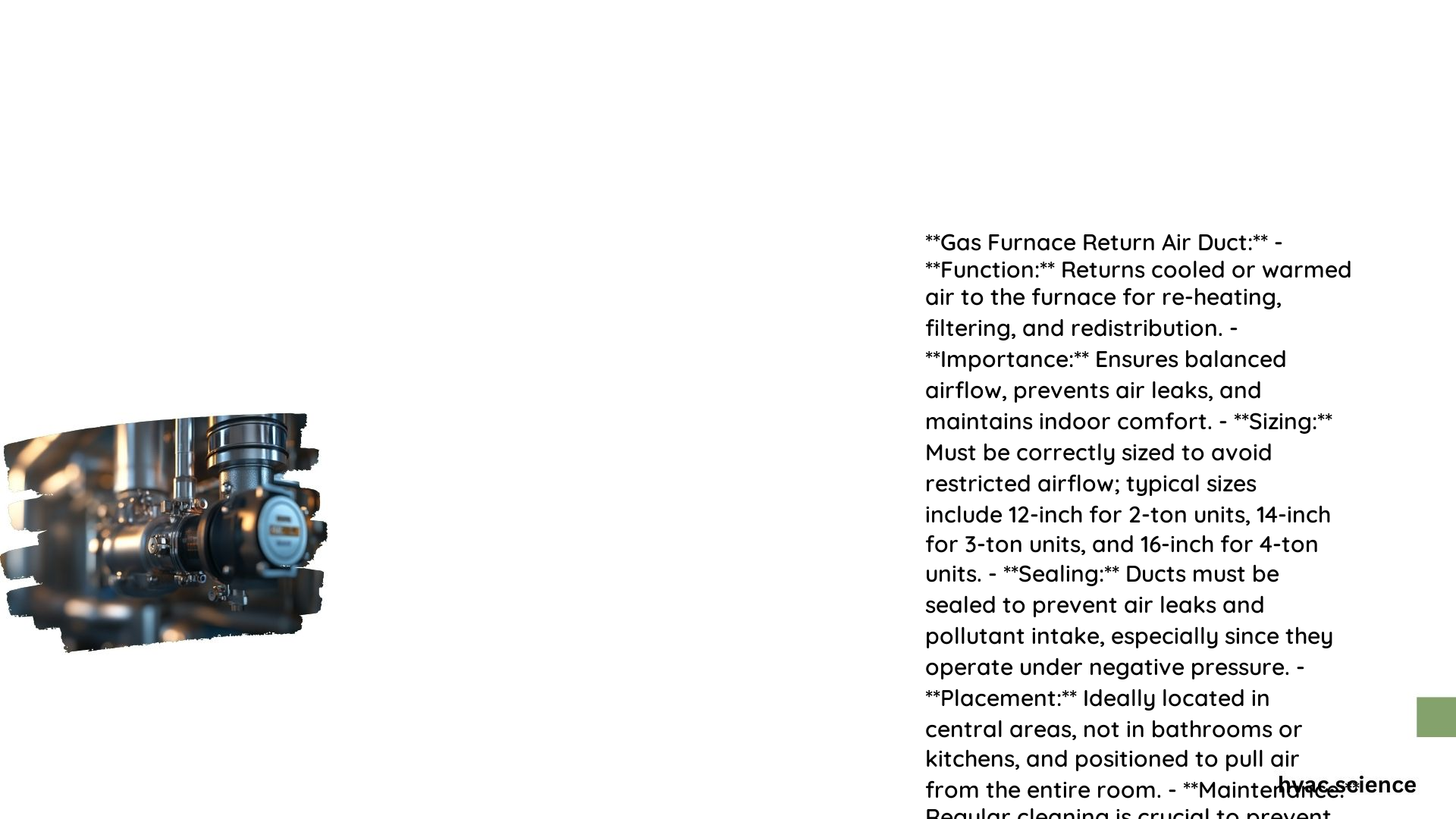A gas furnace is a crucial component of many homes, providing warmth and comfort during the colder months. However, for a gas furnace to operate efficiently and safely, it requires a proper return air duct system, even if central air conditioning is not installed. This article will delve into the importance of gas furnace return air ducts, the recommended number and placement, and the technical details to ensure your home’s heating system is functioning at its best.
Does a Gas Furnace Require Return Air Ducts or Vents, Even if Central Air is Not Installed?
Yes, a gas furnace does require return air ducts or vents, even if central air conditioning is not installed. The return air duct system is essential for maintaining proper air circulation and ensuring the furnace operates efficiently and safely. These ducts allow the air to be drawn back to the furnace, which is crucial for heating distribution and maintaining the correct air pressure within the home.
Can a Gas Furnace Operate Efficiently with Only One Return Air Duct, Particularly in Smaller Homes?

While it is possible for a gas furnace to operate with only one return air duct, it is generally not recommended, even in smaller homes. A single return duct may not provide sufficient airflow to meet the furnace’s requirements, leading to inefficiencies and potential issues with air distribution. For a 40,000 BTU furnace, the recommended airflow is typically between 600 to 800 CFM for heating mode. Having multiple return ducts, especially in larger homes or those with complex layouts, helps ensure that the system can achieve the necessary airflow and maintain balanced air pressure.
How Many Return Air Ducts are Typically Necessary in a Home with a Gas Furnace, and What are the Recommended Locations for These Ducts?
The number of return air ducts needed can vary depending on the size of the home, the layout, and the specific requirements of the furnace. However, here are some general guidelines:
Number of Ducts
For most homes, having at least two return air ducts is recommended. This helps ensure that there is adequate airflow back to the furnace. In larger homes or those with multiple levels, additional return ducts may be necessary.
Recommended Locations
Return air ducts should be located in central areas of the home to facilitate balanced airflow. Common locations include:
- Near the center of the home on each floor.
- In hallways or main living areas.
- Away from supply vents to avoid short-circuiting the airflow.
Technical Details and Calculations
Airflow Requirements
For a 40,000 BTU furnace, the airflow requirement is typically between 600 to 800 CFM for heating mode. This can be calculated using the formula: BTU = CFM × 1.08 × temperature difference. For example, for a 40°F temperature rise, you would need around 740 CFM.
Duct Sizing
Ducts should be sized to ensure proper airflow. A general rule of thumb is to use a duct calculator and set the static pressure between 0.8 and 0.1 inches per 100 feet.
Conclusion
In summary, a gas furnace requires a return air duct system, even if central air conditioning is not installed. Having at least two return air ducts is recommended to ensure adequate airflow and balanced air pressure within the home. The specific number and placement of these ducts should be determined based on the size and layout of the home, as well as the technical requirements of the furnace. By understanding the importance of gas furnace return air ducts and following the recommended guidelines, homeowners can ensure their heating system operates efficiently and safely.
Reference:
- Return duct size for 40k BTU furnace – DoItYourself.com
- HVAC Question – Return Air duct/vents requirement – NACHI Forum
- Return Air Vent Essential To HVAC? – Fritts Heating & Air
